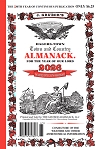Why Do Leaves Change Color in the Fall?
I
n the spring, summer and early fall, trees and plants use sunlight to create food from carbon dioxide and water. This process, known as photosynthesis, relies on organelles in leaf cells called chlorophyll that are produced in large quantity when daylight reaches its peak (spring and summer). Chlorophyll absorbs red, orange and blue light from the sun but only very little green color. Therefore, leaves appear green in the spring and summer. Besides chlorophyll, the other three primary pigments in a leaf include xanthophylls, carotenoids and anthocyanins. Xanthophylls is yellow in color, carotenoids are orange and anthocyanins are red and purple. These pigments are masked by the chlorophyll in the warm season, so we don’t see the yellow, orange, red and purple colors from April to September.
As the daylight shrinks in the fall, trees switch to stored glucose for energy rather than chlorophyll production. In this process, the chlorophyll decreases but the concentration of the other pigments in the leaf stay the same. Therefore, the leaf’s green color fades but the bright yellow, orange, red and purple color from the other pigments described above stand out. This is what we refer to as fall foliage.
So, other than diminishing sunlight producing the tree’s hues or colors, does the weather play a factor, too? The answer is yes. Despite a wet summer, a dry early to middle fall (September and October), can mute the colors. Developing drought during this time of the year triggers the tree to prepare early for winter. This causes the leaves to fall early without the emergence of beautiful colors.
On the contrary, a dry summer but wet start to the fall season can prove beneficial to the foliage season. Similarly, average to above-average rainfall in September, October and November offset by high pressure, calm and dry weather that include cool nights and sunny days create a vibrant and extended foliage season.
Even with appreciable rain in the fall season, a rough stretch of weather from October into early November will end the fall foliage season early. The weather patterns to watch out for that would bring an early end to the foliage season include strong cold fronts producing gusty winds, heavy rain and thunderstorms and late-season hurricanes due to the strong wind field around these systems. While wet weather is one ingredient for great foliage, if it’s offset by a long stretch of warm weather deep into the fall season, trees hold onto the leaves longer and trees don’t pull chlorophyll into their root systems.
A great example of the “muted” foliage season occurred in the fall of 2019. While the summer rainfall trended above average, September into early October was very dry along Interstate 81 in the Cumberland Valley. While the end of October brought quick recovery from a dry early fall, it just wasn’t enough for the trees to recover and produce optimal colors. Instead, the bright colors were far and few between in the Cumberland Valley as many leaves fell off before the rain could help matters.
The 2018 foliage season wasn’t eye-catching either but for a different reason. An abundance of rain and warm weather that pushed into October delayed and muted the change in color. Too much rain created fungus in the trees that triggered the leaves to fall off before their colors were able to shine.
On average, when does the Mid-Atlantic typically see the best fall color? It depends where you live. The Allegheny Highland’s peak foliage occurs between October 6-12. The Lehigh Valley is next between October 19-22. In the Blue Ridge mountains and the valleys west of the Allegheny Plateau, including Pittsburgh, the best colors occur just before Halloween. The Interstate 81 corridor sees peak color in early November while the Interstate 95 corridor to the Atlantic coast’s peak foliage dates are between November 10 and 16. Within two weeks after peak fall foliage, the trees become bare.
Chad Merrill
Weather Prognosticator
Hagerstown Town and Country Almanack![]()
National Weather Association
Weatherecsters Seal of Approval


















